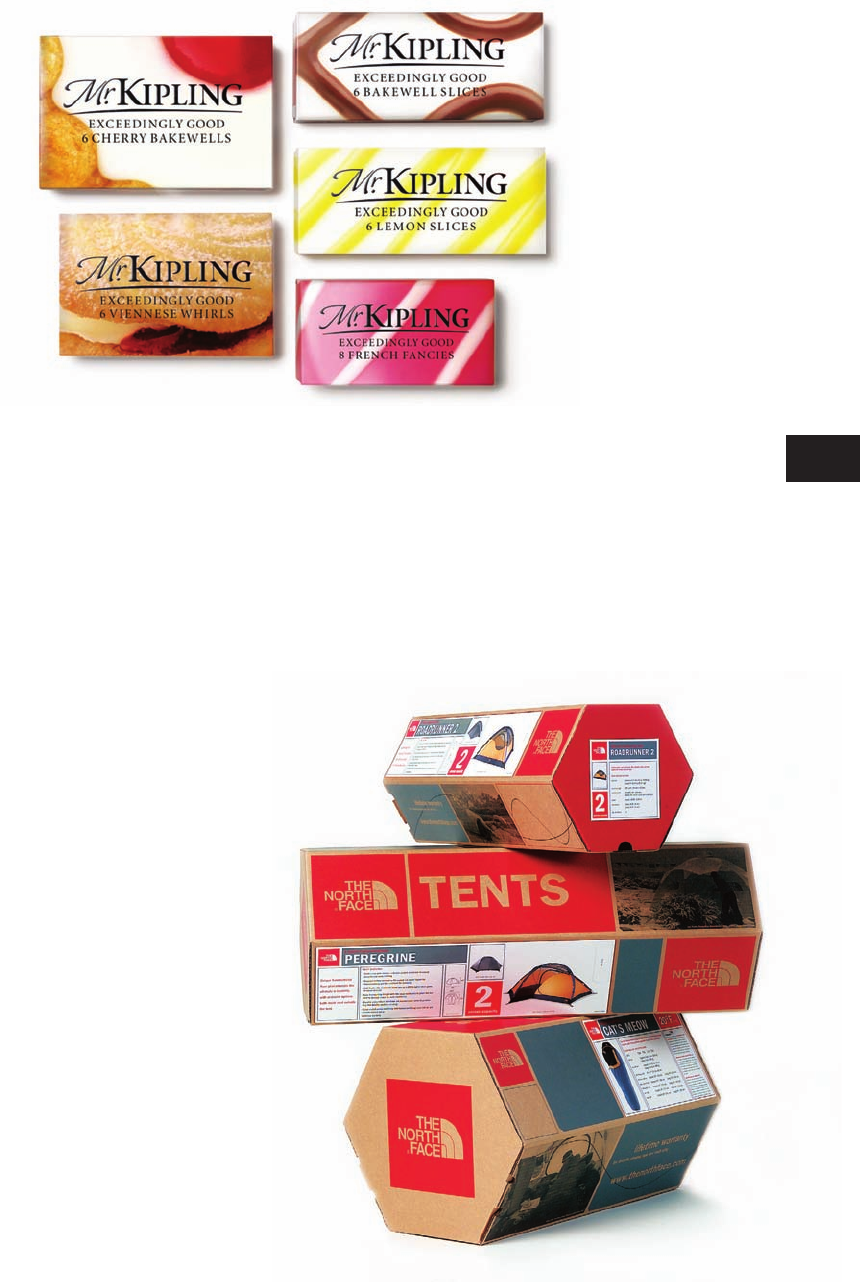
Package Design
Packaging is not only a container for the display, stor-
age, or shipment of a product, it identifi es, differenti-
ates, and creates shelf appeal to entice the target audi-
ence. Effective packages showcase the unique aspects
of a product or service—its benefi ts, quality (premium
vs. economical), or physical characteristics (such as fl a-
vor or scent). As an important extension of a brand, its
job is to convey the brand’s messaging while position-
ing the product against its competitors.
Packaging Highlights Product Features
Package design should highlight the important features
or unique benefi ts of a product. One way to emphasize
key information is by using special materials such as
foil stamps or metallic inks that catch a viewer’s eye.
Another way to inform and entice a customer is by of-
fering them a closer look at the actual product through
the use of acetate or cellophane windows. Showing an
item can be an effective strategy because it reduces the
mystery and buyers can feel more confi dent in their de-
cision to purchase a product. For some items, the most
important things are its features. By designing the pack-
age to include an extra fl ap listing benefi ts, features, or
other pertinent information, a designer will promote
viewer interaction; as we all know, getting the product
into the hands of the customer is half the battle.
The halftone dot pattern radiat-
ing outward from the Zazz mark
communicates to the viewer the
carbonated qualities of the product
and lends a modern sensibility to
the packaging.
Design: Wallace Church
Minimal product packaging
allows customers to interact
with, examine, and hold this
college application binder. A
card-stock band introduces the
product and explains its key
features and benefits.
Design: Satellite Design
162
The Complete Graphic Designer
TB
Provision-Complete Graphic Designer
CD109-59/4028
1st
proof
CGD p144-192_Text file_.indd 162CGD p144-192_Text file_.indd 162 1/20/09 3:24:25 PM1/20/09 3:24:25 PM

Branding
163
North Face’s package system for
tents and sleeping bags has an
irregular-shaped container with a
unique shelf presence. The hex-
agonal shape also allows for easy
stacking of crates and boxes, and
offers stores the ability to create
dynamic displays.
Design: Satellite Design
Packaging Establishes Shelf Presence
A designer’s job is to determine the most likely place-
ment for a product within a retail store—and design-
gripping graphics that draw attention to it. Compa-
nies and brand managers often offer incentives to
retailers for prominent placement within a store or
on store shelves. Placement of a product or package
is an important consideration; for example, it might
appear high up or down low on the shelf, making it
easier or more diffi cult for customers to see when
scanning products on a grocery store aisle. End caps,
located at the end of store aisles, or special product
bins attract attention and highlight particular prod-
ucts or brands, while areas near a cashier are notori-
ous for containing impulse-purchase items such as
gum, candy, or small, inexpensive items.
Striking product photography and
minimal copy is both mouthwater-
ing and highly effective at selling
these pastries from Mr. Kipling.
Design: Turner Duckworth
TB
Provision-Complete Graphic Designer
CD109-59/4028
1st
proof
CGD p144-192_Text file_.indd 163CGD p144-192_Text file_.indd 163 1/20/09 3:24:27 PM1/20/09 3:24:27 PM
Get The Complete Graphic Designer now with the O’Reilly learning platform.
O’Reilly members experience books, live events, courses curated by job role, and more from O’Reilly and nearly 200 top publishers.

